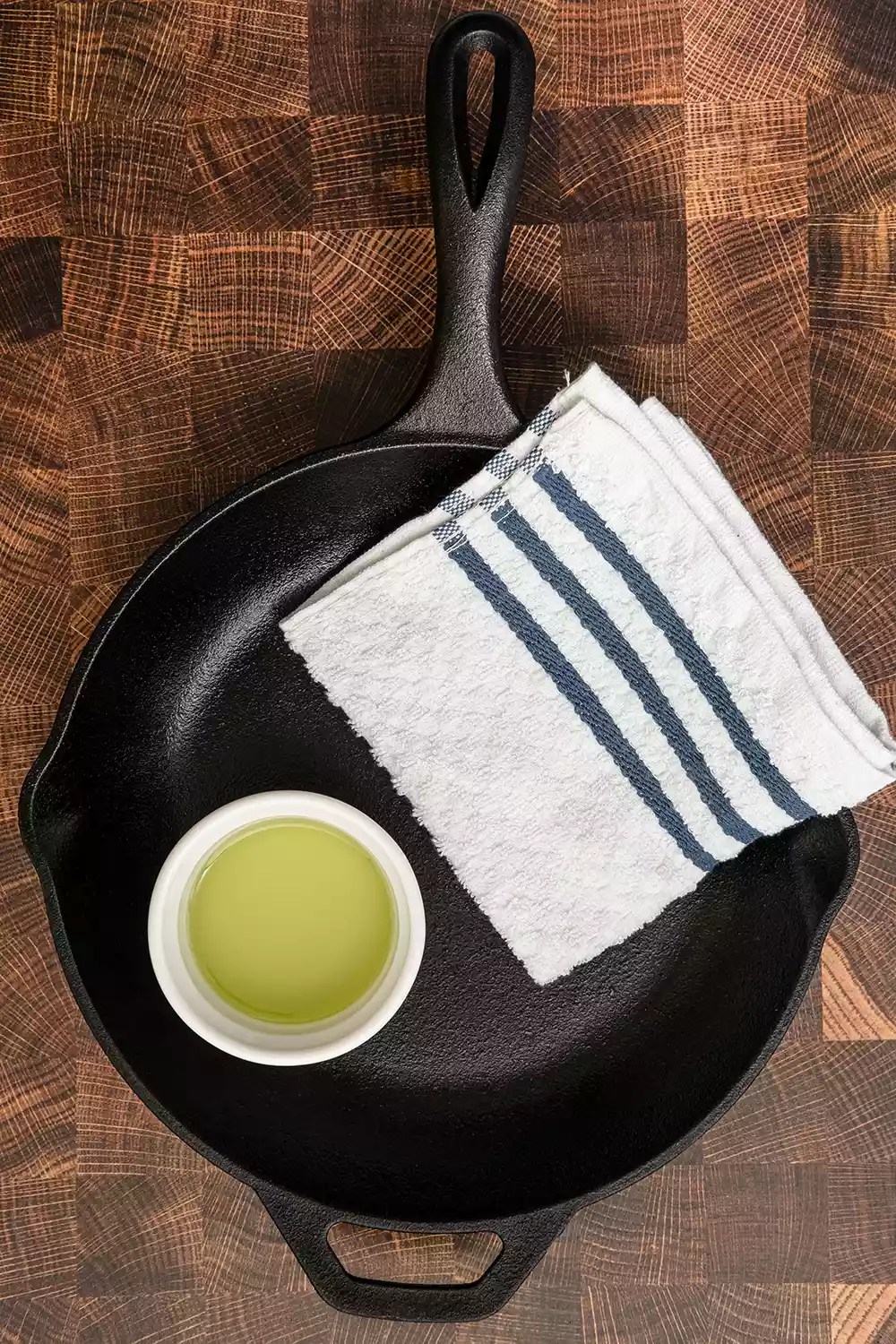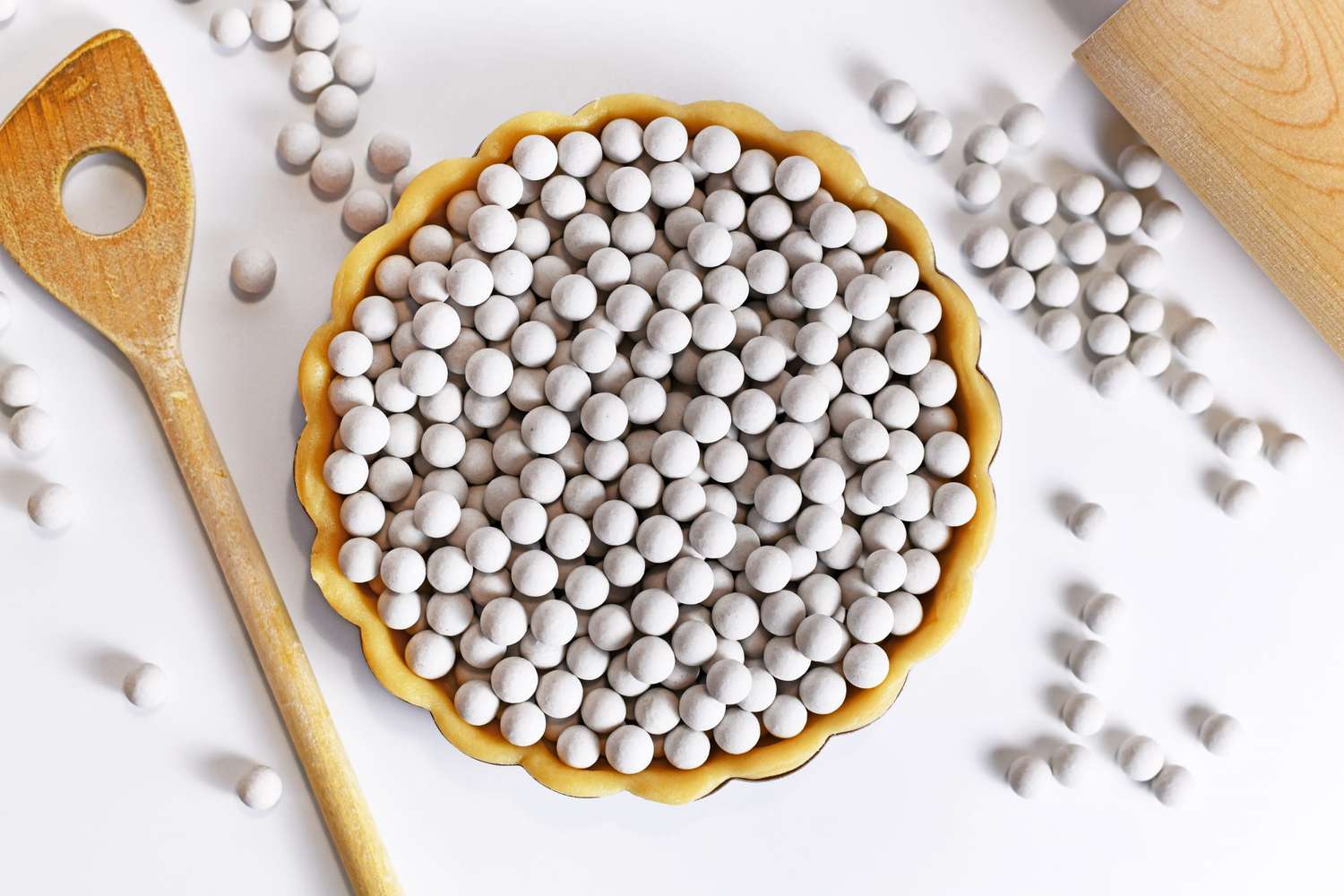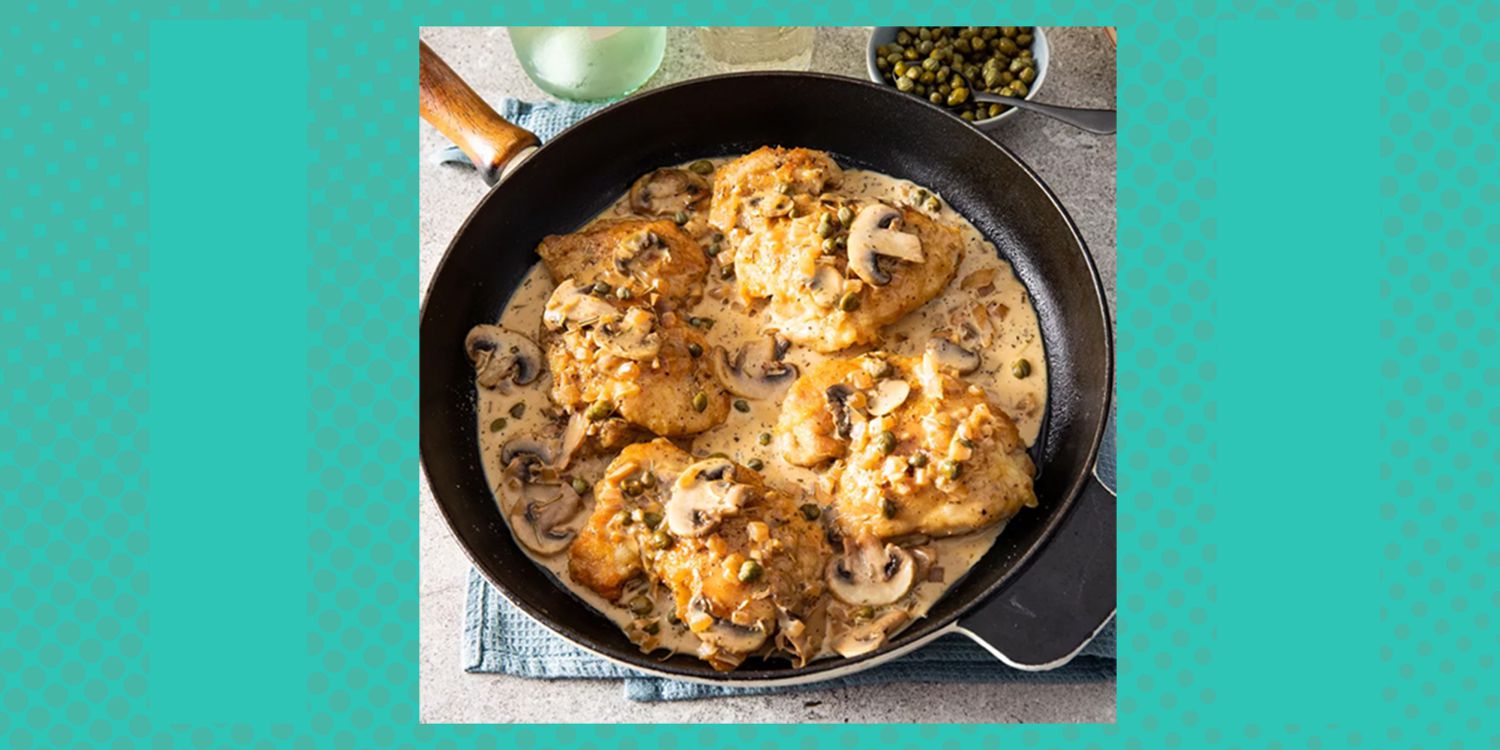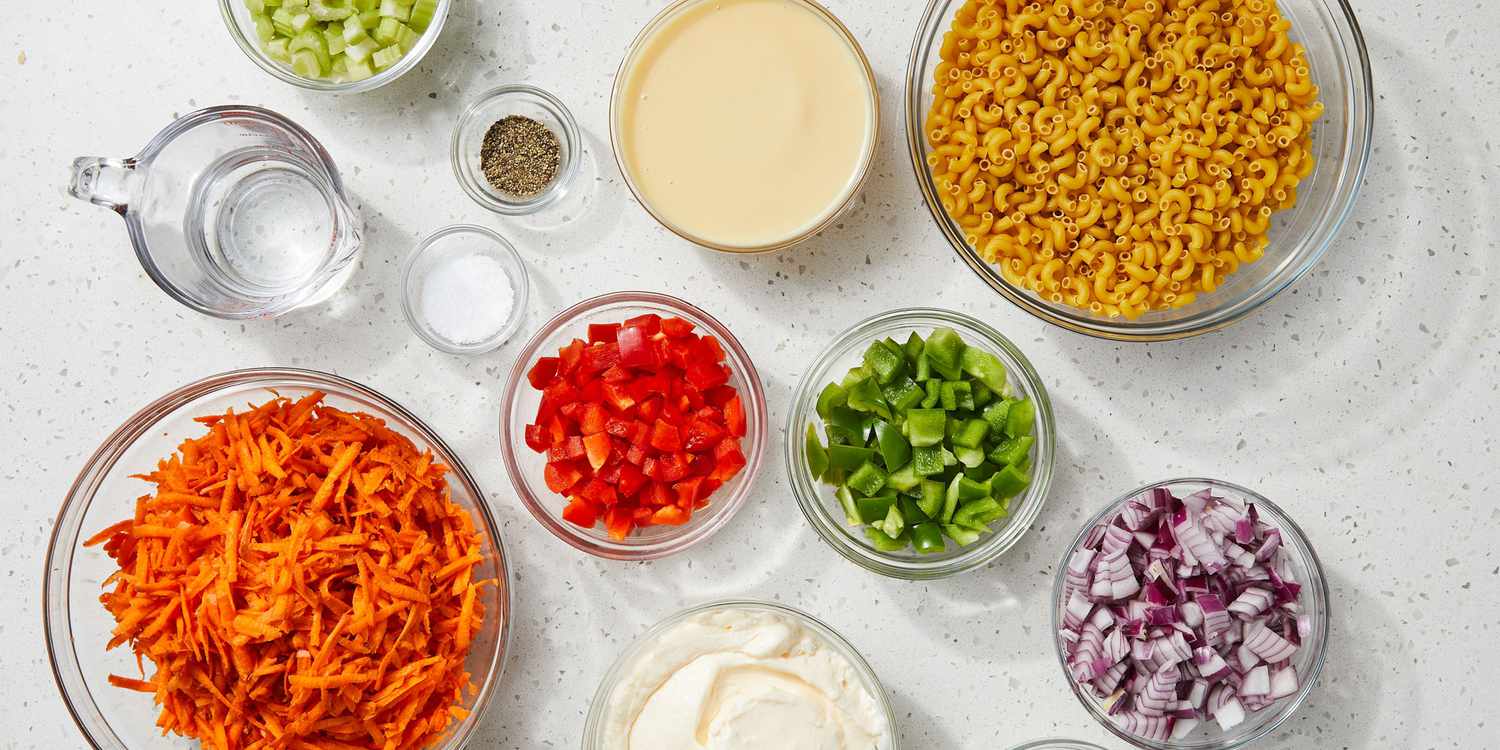A cast iron skillet is an inexpensive but hard-working piece of kitchen gear that can last through generations of cooks. Seriously. Even the most ancient, rust-encrusted cast iron pan unearthed in a thrift shop is treasured like a diamond in the rough by those in the know. Yet, in the age of fancy non-stick pans and shiny cookware, many home cooks are a little intimidated by cast iron.
Nicole McLaughlin, also known as NicoleMcmom, is here to teach you all you need to know about cooking with and caring for a cast iron skillet, including how to clean and “season” it properly so it’ll give you a lifetime of faithful service.
How to Season a Cast Iron Skillet
Seasoning a cast iron skillet simply means baking in thin layers of fat so that the oil bonds to the naturally porous surface of the iron to create a non-stick surface. Nicole likes to get a head start on the process by buying cast iron skillets that are pre-seasoned, but you still need to season them as you use them. This improves the surface of the pan every time. Here’s how to season a cast iron pan before you use it for the first time:
- Wash with soap and water, and dry with a towel.
- Place the clean, dry cast iron pan over low heat on your stovetop to complete the drying process.
- Turn off the heat and add a scant amount of vegetable oil to the pan. Good choices are grapeseed, flaxseed, or plain vegetable oil. Using a thick wad of paper towels to protect your hands from the heat, rub the oil all over the inside and outside of the pan. Wipe off any excess oil until you’re left with an ultra-thin coating. Anything thicker will turn sticky and gummy.
- Place the pan upside down on the middle rack of a 400 degrees F oven. Place a baking sheet on the rack below it to catch any oil drips. Let the pan bake for 45 minutes.
- Repeat steps 3 and 4 several times to get a good layer of seasoning. Remember: Use just a scant amount of oil every time so you don’t gum up your pan.
Do you have to do this after every use? No. Maintaining a properly seasoned cast iron pan is surprisingly simple. We’ll get into that later.

How to Cook With Cast Iron
Here are a few basic tips for cooking with your cast iron skillet to get the best results:
- Heat the pan before adding the food. This evens out any hot spots that could lead to uneven browning or cooking. You can preheat the skillet in the oven or on the stovetop (Nicole prefers to preheat on the stovetop while she preps her ingredients.)
- When you’re searing meat in cast iron, wait for the meat to form a crust and naturally release from the surface of the pan instead of prying it up and flipping it back and forth.
- You can use cast iron to cook sweet recipes as well as savory; some folks like to use separate pans to avoid baking cinnamon rolls in the same cast iron pan they used to fry fish, for example.
Explore Our Favorite Cast Iron Recipes:
These recipe collections are the perfect place to beging gathering inspiration for all of the ways you can use your cast iron cookware.
- The Best Recipes to Cook in a Cast Iron Skillet
- Our Best Cast Iron Skillet Desserts
- Cast Iron Recipes for Beginners That Will Make You Look Like a Pro
- 10 Comfort Food Dinners to Make in Your Cast Iron Skillet
How to Clean a Cast Iron Skillet
This is the part of using cast iron that causes the most anxiety in cooks who are new to this. Let’s break it down so you can see how easy it is to clean and maintain a cast iron skillet:
- It’s easier to clean cast iron while it’s still warm. Start by using paper towels to wipe away any crusty bits or grease left in the pan after cooking.
- Use warm water and a sponge or plastic scrubber to get rid of anything you couldn’t wipe away. You can also use a gentle dish soap if necessary. What you don’t want to use is a harsh detergent, scrubbing powder, or metal scrubber. Do not put your cast iron skillet in the dishwasher.
- Dry with a towel, and dry again over low heat.
- Wipe the surface down with a tiny bit of oil and let the pan cool completely before storing.




